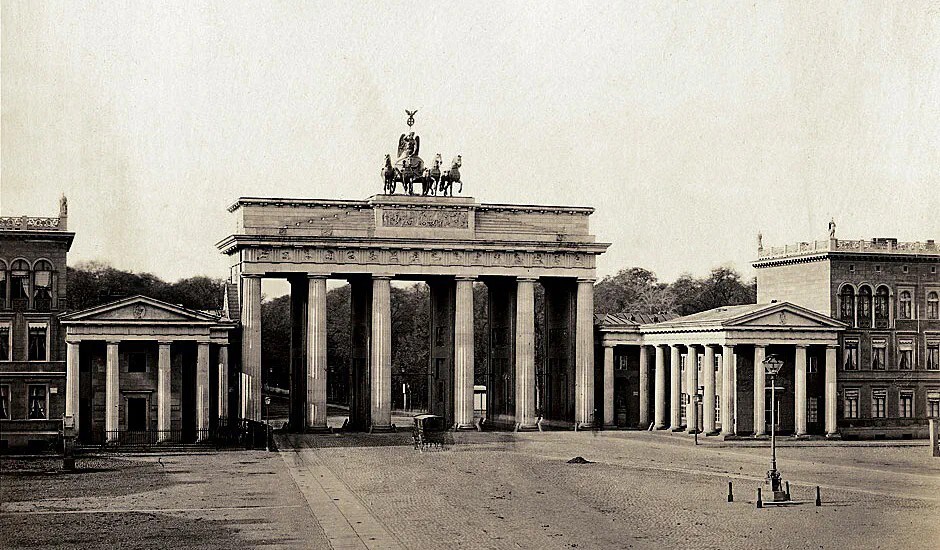The history of the gate begins in the late 18th century, when the construction of a monumental triumphal arch was initiated on the orders of King Friedrich Wilhelm II of Prussia.The architect Carl Gotthard Langhans, a representative of the neoclassical architectural style, designed the structure, which was inspired by the architecture of ancient Greece.Between 1788 and 1791, the gate was constructed and was intended not only to represent the power and progress of Prussia but also to mark the entrance to the former city of Berlin.

Over time, the Brandenburg Gate became a silent witness to numerous historical events.During the Napoleonic Wars, it initially served as a memorial after Napoleon Bonaparte had occupied the city.In this era, it symbolized both the triumph and the humiliation of a once powerful army.In the following period, the structure underwent various reinterpretations, placing it at the center of political and social disputes.
In the following period, the building experienced various reinterpretations, placing it at the center of political and social conflicts. Particularly notable was the role of the Brandenburg Gate during the Cold War.
Particularly notable was the role of the Brandenburg Gate during the Cold War.With the construction of the Berlin Wall, it became a symbolic border between East and West, between freedom and oppression.The gate, once a symbol of Prussian power, became a memorial to the division of Germany and a visible sign of Europe's ideological split.For decades, it stood in close proximity to the border, separating families and preventing free exchange between citizens.
For decades, it stood in close proximity to the border, which separated families and prevented free exchange between citizens. With the fall of the Berlin Wall in 1989, the symbolism of the Brandenburg Gate also fundamentally changed.
With the fall of the Berlin Wall in 1989, the symbolism of the Brandenburg Gate also fundamentally changed.It became the epitome of German reunification and the overcoming of the division that had shaped Germany for decades.Today, it welcomes visitors from all over the world, who see in the structure not only an architectural masterpiece but also a living testament to Berlin's tumultuous history.The Brandenburg Gate thus stands as a symbol of freedom, unity, and the constant change that shapes the history of a nation.
Warning
Warning: not suitable for children under 36 months. Contains small parts which may cause choking hazard if swallowed. We recommend keeping the packaging for reference. Colours and styles may vary.








